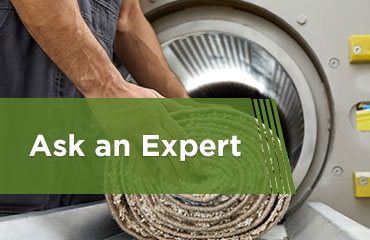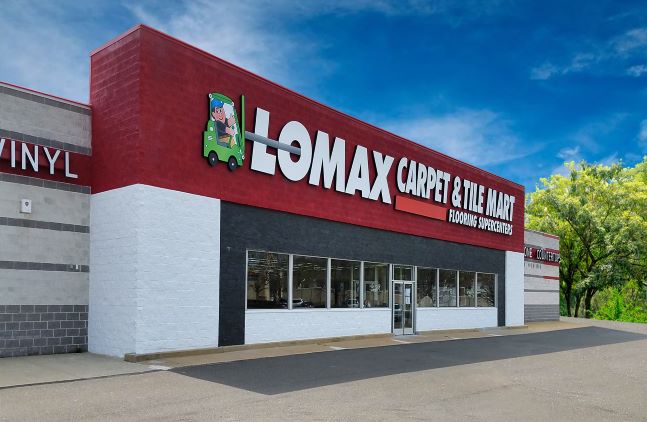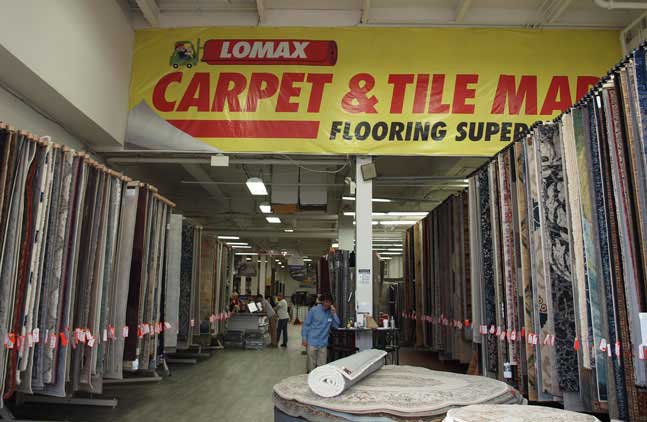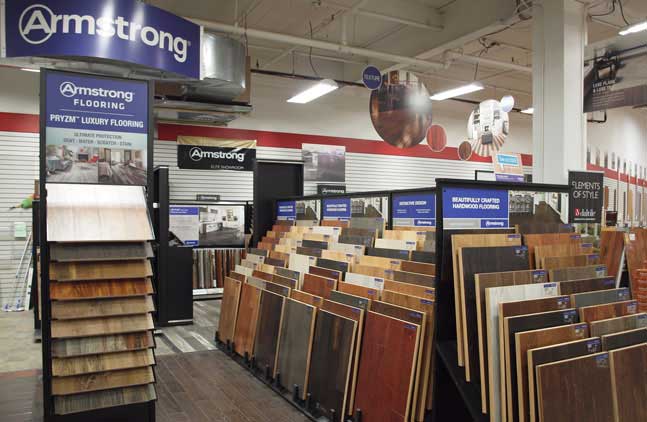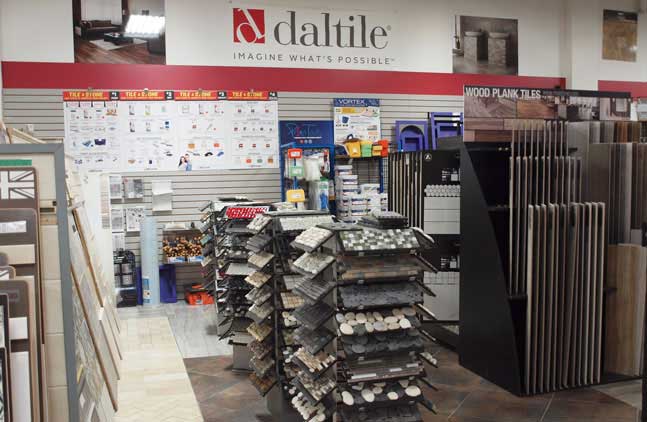Luxury Vinyl Tile (LVT) flooring is a superior alternative to ceramic or porcelain tile, offering elegance, durability, and easy maintenance. Learn why LVT is the perfect choice for creating an authentic, natural look in commercial environments.
If you've been looking for flooring in recent years, you've likely come in contact with tile, hardwood, and vinyl flooring on more than one occasion. These are your more standard types of flooring. LVT flooring is a significant upgrade over the common vinyl tile, making it an ideal material for many home and business owners.
Luxury Vinyl Tile (LVT) Flooring In-Depth
Although it's been around for decades, you may still wonder "what is LVT flooring?" You wouldn't be alone in your query. LVT is often commonly confused with other vinyl tile types and tends to be less popular than luxury vinyl planks (LVP).
Understanding LVT Flooring LVT flooring is made up of several layers of high-quality vinyl and a wear layer. The wear layer is a strong, durable layer that protects the flooring from scratches, stains, and other damage. The backing layer provides cushioning and insulation, making it comfortable to walk on. The middle layer is what gives the flooring its strength and stability. The top layer is a printed design that gives the flooring its natural look and texture. LVT flooring is water-resistant, meaning it does not absorb moisture or spills like traditional tile. It is also easy to maintain, requiring only a damp mop or cloth to clean. It is also available in a variety of colors, patterns, and textures to suit any decor. Installation of this flooring is easy. It can be installed over existing flooring, making it a great choice for renovations and remodels. Overall, LVT flooring is a great choice for commercial environments. It offers an authentic, natural look with the durability and easy maintenance of vinyl. With its water-resistant properties and variety of colors and patterns, it is a great option for any commercial space.
LVT Layers
Explore the multi-layered construction of LVT flooring, including backing, core, image, and wear layers. Discover the materials used and their impact on pricing, comfort, and longevity.
Pros of LVT
Waterproof and Resilient: LVT is an ideal flooring option for moisture-prone areas like bathrooms and kitchens. Its water resistance ensures long-lasting durability and easy cleanup.
Easy Maintenance: LVT is an easy-to-clean material that requires minimal effort and maintenance. It doesn’t require waxing, polishing or buffing, making it a great choice for busy households. A quick mop, sweep or vacuum is all that is needed to keep it in pristine condition.
LVT is a versatile flooring option. It comes in a range of colors, finishes and textures.
This makes it suitable for any area of your home. LVT is a great choice for homeowners who want to bring a consistent look to their home.
It can be installed in almost any room. In addition, it requires minimal effort to keep clean and fresh. Its stain and scuff resistance make it a breeze to maintain using regular household cleaning tools.
Durability and Longevity: LVT withstands heavy foot traffic and resists scratches, ensuring a lasting finish. Its robust wear layer provides protection against daily wear and tear.
Cost-Effective: While not the cheapest option, LVT offers excellent value for the quality it delivers. Explore the wide range of designs, colors, and patterns available at an affordable price.
Cons of LVT
Everything has its downside, and LVT is no different. We couldn't talk about the pros without providing the cons. Thankfully, luxury vinyl tiles have very few drawbacks.
Sizing could be a minor concern as most LVT flooring is commonly 12"x24" or 6"x48". Generally speaking, this usually doesn't present much of an issue so long as the design is consistent.
Although LVT offers a large variety of designs, it's common for some designs to have very few variations. One of these designs happens to be stone. Manufacturers will typically only stick to a few stone styles making it challenging to find something unique.
LVT is a PVC-made product making it not eco-friendly. Those who are conscious of their environmental impact may find it challenging to accept that LVT is difficult to recycle.
FAQ
Q: Are all vinyl floor planks waterproof?
A: No. However, most are water-resistant. The difference comes down to the brand and what they offer.
Q: How is Luxury Vinyl Tile (LVT) installed?
A: You can place LVT over most surfaces. However, they are less forgiving on uneven surfaces that other flooring may work better on. LVT with a solid backing layer can be installed over concrete, plywood, hardwood, and tile.
Installation will vary by manufacturer. Most provide a floating flooring option, such as click-lock, to keep your tiles in place. Grip strips are another common option that some manufacturers prefer. Most individuals should find it easy to install LVT on their own. However, in the case of uneven flooring, it may require the help of a professional.
Q: Is it safe to use a rug over LVT?
A: It can be safe, but you'll want to ensure that you stick to a woven mat or a rug with a safe vinyl layering to avoid discoloration over time.
Q: How do I clean and maintain LVT flooring?
A: Cleaning and maintaining LVT flooring is relatively easy. Regularly sweep or vacuum the floor to remove loose dirt and debris. Use a damp mop or cloth with a mild, pH-neutral cleaner recommended by the manufacturer for deeper cleaning. Avoid using harsh chemicals or abrasive tools that can damage the flooring. Wipe up spills promptly to prevent staining, and consider using furniture pads to prevent scratches from heavy furniture.
Q: How do I clean and maintain LVT flooring?
A: Cleaning and maintaining LVT flooring is relatively easy. Regularly sweep or vacuum the floor to remove loose dirt and debris. Use a damp mop or cloth with a mild, pH-neutral cleaner recommended by the manufacturer for deeper cleaning. Avoid using harsh chemicals or abrasive tools that can damage the flooring. Wipe up spills promptly to prevent staining, and consider using furniture pads to prevent scratches from heavy furniture.
Q: Can LVT be installed in basements?
A: Yes, LVT is a suitable flooring choice for basements. It is highly resistant to moisture, which is especially important in below-grade areas prone to dampness. It is however essential to protect the basement from moisture to protect the subfloor. This is necessary for best results before installing any type of flooring, such as LVT.
Q: Can LVT be installed in bathrooms and kitchens?
A: Yes, LVT is an excellent choice for bathrooms and kitchens. Its water resistance makes it highly suitable for areas prone to spills, moisture, and humidity. With proper installation and regular maintenance, LVT can provide a durable and stylish flooring option for these spaces.



